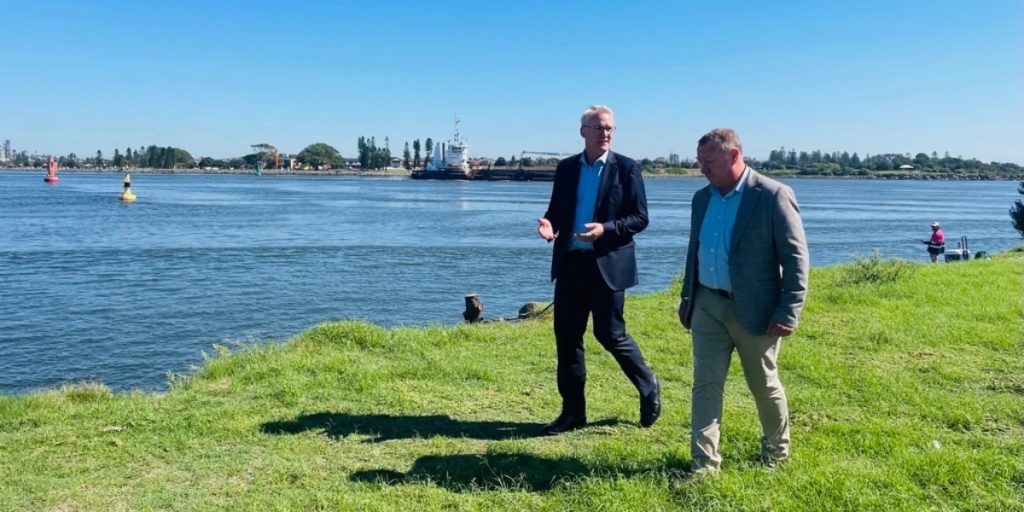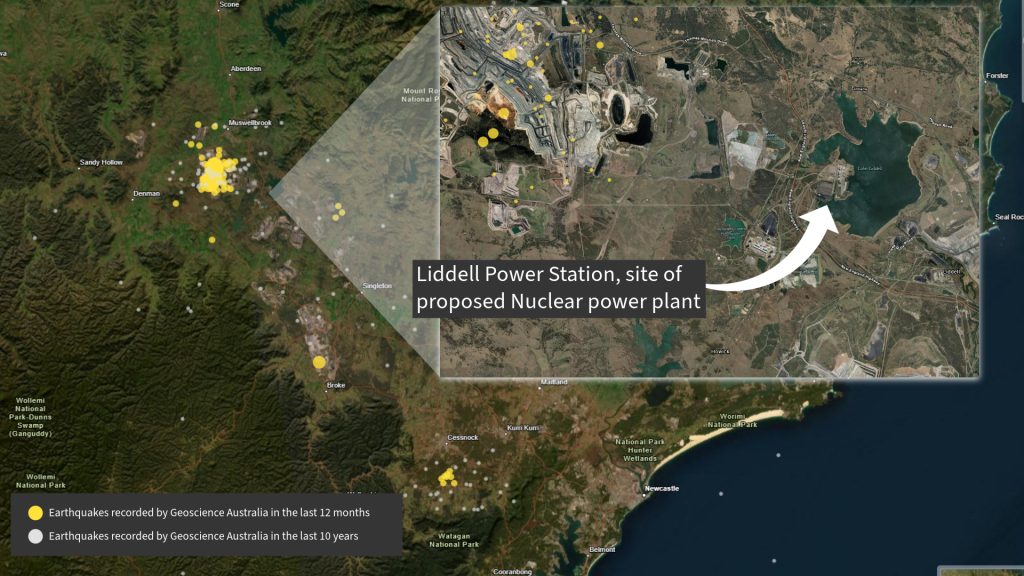For over a century, the Muswellbrook area has been mining coal.
Mines have been the consistent bedrock for local economies, but the renewable transition, a decline in coal exports, and imminent mine closures – beginning with the massive BHP Mount Arthur mine which employs some 2,000 people and is scheduled to stop mining next year – threaten to disrupt this balance and transform the Hunter Valley communities.
On the one hand, the current Labor Government is pushing a transition to renewable energy, seen in Muswellbrook’s Solar Farm, the Bowman Creek Wind Farm and the Muswellbrook Pumped Hydro Scheme. On the other, the Coalition have proposed putting a nuclear reactor at the former Liddell Power Station. While the CSIRO has found that nuclear will cost twice as much as renewables, Liberal leader Peter Dutton insists that building nuclear reactors will bring down power prices.
It is the energy debate taking place across the country. But in Muswellbrook, it’s personal.

Bruce Waddell has lived in the Upper Hunter for 20 years, moving to the area for a job in the mines. Just under a year ago, he made the decision to leave the industry.
“For me it was a case of, where I was at the time, winding down in five to six years – I don’t want to be competing with 300, 400 younger people for a job when I’m not short of retirement age myself,” Mr Waddell said.
While Bruce has navigated the job-market post-mining, like most Upper Hunter residents, he wants answers as to how the region will be supported with imminent closures.
“The whole Upper Hunter revolves around mines, if mining wasn’t here, Muswellbrook wouldn’t be much of a town,” he said.
“They pay good money to workers but once things start to wind down and places hit their coal reserves, a lot of people will lose their jobs.”
And they’re good jobs, with even entry level salaries well above what people can get elsewhere, most staff on six-figure salaries, and plenty of opportunities for training and advancement.
“It’s easy enough for the Government to say they’ll retrain all these people and find them extra work, but will that actually translate to them getting paid the same amount of money?”
“If people are only earning half the wage they were in the mines, that’s not sustainable, not with the price of electricity and living,” Mr Waddell said.
Mayor of Muswellbrook Shire Council Jeff Drayton is calling for immediate federal action, wanting to see clear and binding commitments to avoid a region wide downturn.
Alongside Business Hunter, the Council put forward key proposals including an Economic Diversification Fund, infrastructure investment and workforce transition programs.
“This should have happened five years ago,” Mr Drayton said.
“One of the proposals we have made is to use some current mining buffer land to access and put industrial type businesses, both small- and large-scale manufacturing, renewable products and some intense agribusiness.
“We need a number of those diverse businesses moving away from coal, so we have industries to send workers into.”

While the prospect of introducing nuclear power to Australia has been a major talking point in this election, with Muswellbrook one of the key areas within that discussion, Mr Drayton says that locally, it hasn’t been a big subject of interest.
“I would say the majority of people in our LGA are undecided and have effectively left it as an argument for Canberra,” he said.
It’s a sentiment that has been noted across the Coal Triangle, a level of resignation, with all power to decide their futures taken away by the national energy debate.
“We will have to wait to the see the outcome of the election first and nuclear might not even need to be a consideration.”
Within the community, however, there are locals like Steven Fordham, managing director of company Blackrock Industries, who believes that nuclear will be positive for the town and a key aspect for economic diversification in the region.
“Muswellbrook has been one of the largest energy producing areas for a very long time and we should continue down that path as long as we can,” Mr Fordham said.
“In the Hunter Valley, we do need an energy mix and we have battery, solar, wind and hydrogen on the horizon but nuclear is just another great option to have within our area.”
One consideration when it comes to potential nuclear projects is the frequent earthquakes. In the last year, the region has experienced dozens of earthquakes and aftershocks with magnitudes up to 4.7. There are mixed opinions locally regarding whether these tremors should have any bearing over potential nuclear projects within the area.

“For people that don’t want to see nuclear, [the earthquakes] are certainly one of the issues that are regularly raised,” Mr Drayton said.
“Why would you build a nuclear power plant on a fault line?”
Steven Fordham however believes that technology has caught up and that the earthquakes are not a concern.
“We need to look at what the common sense approach is, review it and see if it’s a suitable asset to be built within Muswellbrook,” Mr Fordham said.
“I think it is, it will be a job creator and that’s what we want and need in the area.”
Follow all the New England Times coverage of the federal election here or have your say on Engage
See more about the race in New England here
See more about the race in Parkes here


